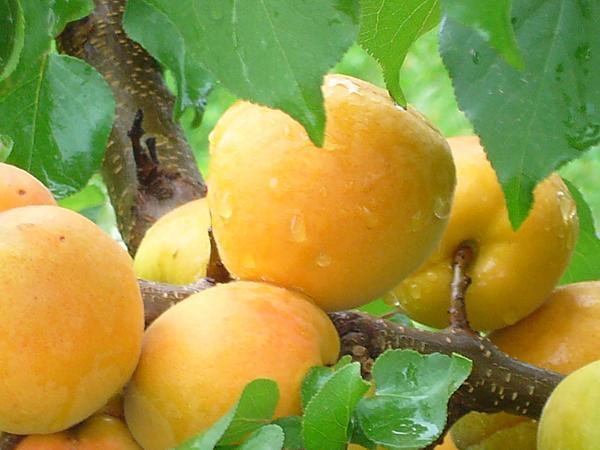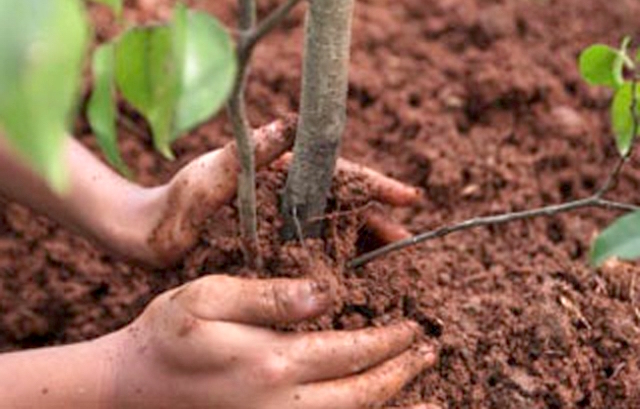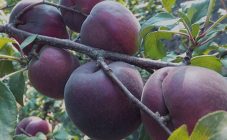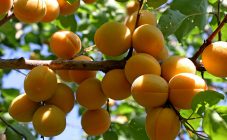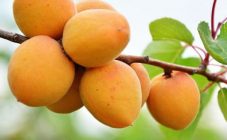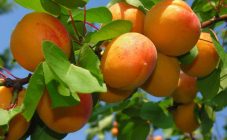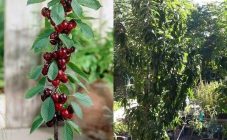Content:
Shalakh is a medium-ripening apricot variety. Bred in Armenia, although many consider it a domestic variety. The people have several names: Pineapple, Shalagi, Lemon, White and Jewish apricot.
Description of the tree
Trees bear fruit 3-4 years after planting. The variety stands out for its regular yield. The first ripening is late.
Apricot Shalakh belongs to the mid-season varieties. The technical ripeness of the fruits occurs at the end of July and the first half of August. The variety will not ripen evenly and therefore the harvest may take 2-3 weeks.
Description of the apricot variety Shalakh:
- drought tolerance;
- resistance to low temperatures;
- cross-pollination;
- disease resistance: clasterosporium disease, curly leaves, moniliosis.
In warm regions, flowering begins in the first half of June. Unfavorable weather conditions can postpone development by 2-3 weeks, but then the fruits will ripen later. The diameter of the flowers ranges from 2.5 to 3 centimeters. Snow-white petals, elongated or round.
Apricot White is not able to pollinate on its own, so the tree is planted next to other fruit crops. Gardeners say that the volume of the harvest and the taste of fruits will only improve from the proximity to cherry plum, peaches and other types of apricots.
Fruit characteristics
The fruits of Lemon apricots are large: one fruit weighs 80–100 grams. The shape is oval or ovoid. The abdominal suture is clearly defined. Bumps are felt on the skin. Fruit color ranges from yellow to bright orange with a red blush on the sides.
Fruits with a matte, velvety surface. The skin is firm, so the fruit that has fallen to the ground will not break. The pulp has pronounced taste characteristics: sweet, juicy, with hints of sourness and a light pineapple aroma. The stone is easily separated from ripe fruit.
Yield
Shalakh produces abundant harvests. From one tree, from 100 to 200 kilograms of fruits are obtained. With good weather conditions and especially careful care, the figure can rise to 350-400 kilograms.
Apricot is resistant to frost - up to -25 degrees. Therefore, the variety is not recommended to be grown in Siberia and other regions with severe winters. An exception is the shelter of trees for the winter (greenhouses).
Resistant to fungal diseases and pests. Doesn't require careful maintenance.
How to plant an apricot
Planting is carried out in the spring, since in the fall the tree does not have time to take root and gain strength. You should choose a plant over 1 year old, 60–70 cm high, with a developed root system and 2–3 branches.
The roots of a healthy tree are not bright in color, many of them are rolled inward and slightly damp. It is best to take a plant for planting in a container with native soil. If the apricot does not have a "package", transport it carefully so as not to damage any of the roots.
Landing is carried out in a pre-prepared pit, measuring 70 by 70 (height and width). In the middle of the hole you need to drive a peg, which will help to establish the plant evenly and correctly "plant" the roots.
It is necessary to lay a drainage 5–10 cm at the bottom (this will not allow water to stagnate in the roots). Then a third of the hole is filled with fruitful soil with the addition of mineral fertilizers. The pit is left for 2-3 weeks for subsidence. After that, the seedling is inserted into the hole, the root system is leveled (each root is carefully separated from each other), covered with earth and tied to a peg. Finally, the young plant is watered abundantly (at least 1 bucket of water).
Sawdust or peat can be placed around the trunk in a layer of 10 centimeters. It will warm the root system while fertilizing it. Some gardeners use straw for this purpose.
Apricot care Shalah
Taking care of the apricot tree is not difficult, but it is necessary to adhere to a systematic approach.
You need to follow the recommendations:
- In the first 1-2 months after planting, water 2 times a week (in case of frequent rains, water no more than 1 time). Each plant will need 1 bucket of water.
- To protect the roots from frost or drought, carry out the mulching procedure immediately after planting.
- Pruning is done every spring or fall. Weeding and loosening is done after watering as needed. It is important to remove weeds along with seeds and roots.
- In early spring and winter, it is necessary to fertilize the tree with manure with the addition of minerals.
Plants are fed based on the state of the soil. Nitrogen fertilizers are introduced only in spring, the rest of the time - potassium and phosphorus. For additional feeding, organic matter is introduced in the fall. In the spring, it is useful to whitewash the stems and the trunk with slaked lime, with the addition of vitriol and clay.
Crown formation
For fruit trees, pruning is an important and integral developmental stage. With this procedure, you can independently regulate the flow of sunlight.
Fruit branches function for 2-3 years, after which they need to be cut off. Without regular maintenance, apricot will bear fruit less often (every 2-3 years). In addition, trees with a dense crown often suffer from coccomycosis, which reduces their fertility and resistance to frost.
Advantages and disadvantages of the variety
Among the main advantages of the variety, the following are distinguished:
- duration of storage of fruits (up to 2 weeks);
- good frost resistance;
- suitable for conservation;
- attractive appearance of the fruit;
- lack of high requirements for care;
- large apricots;
- possibility of transportation;
- begins to bear fruit in 3-4 years after planting.
The disadvantages are that the large crown of the tree makes it difficult to harvest and carry out maintenance activities. It is also noted that the maximum fertility of trees is observed in a mild southern climate. It will not be possible to grow the variety of Armenian apricots in the northern regions due to insufficient frost resistance.
